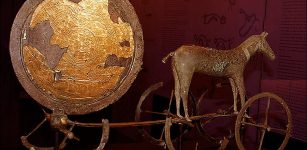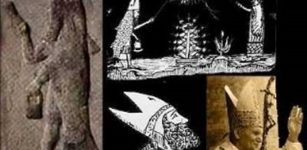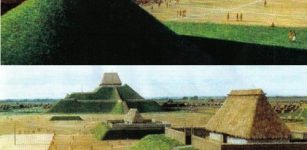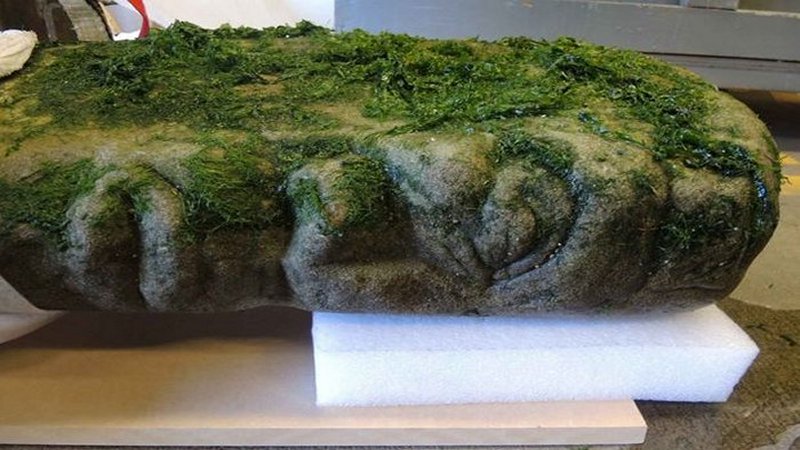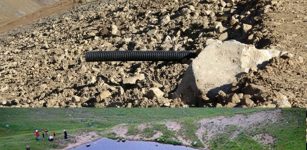Vijayanagara – The City Of Devas – ‘The Shining Ones’ – Place Where Mythology And History Coexist
MessageToEagle.com – It is time to visit remarkable Vijayanagara, one of the most beautiful ancient places and one of the kingdoms of the Shining Ones.
Vijayanagara is probably the most mysterious city in India, the lost land of a thousand gods, holy texts and marvellous temples.
Hampi, originally called Vijayanagara, (“City of Victory”, in Sanskrit) was once the flourishing and beautiful capital of the Vijayanagar Empire.
Today, there are only ruins of stone temples, smaller shrines and other buildings. Vijayanagara lies somewhere in a wilderness, abandoned and forgotten.
A legendary “City of Victory”, from vijaya “victory” and nagara (city), known as Vijayanagaram and located in Andhra Pradesh, was once on eastern coast of India.
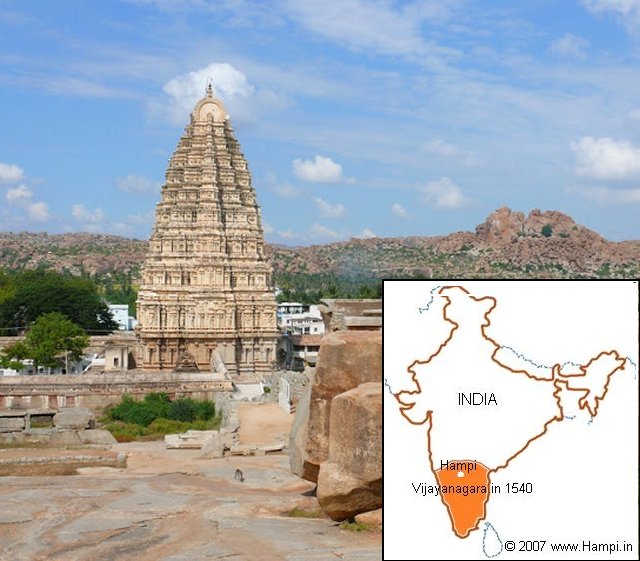
Now, it is not the famous Vijayanagara – the “City of Shining Ones” (devas) but Hampi.
No one knows exactly when the city was created and its history is shrouded in mystery but according to the sacred texts of India, it was a place where people and gods used to meet.
Still in 1443 AD, the mysterious city was in full bloom. The famous Persian traveler, Abdul Razzaq, saw the city of extreme size, ruled by the wise and powerful king, who had one thousand elephants.
“City of Vijayanagaram has no equal in the world” was Abdul Razzaq’s true impression.
Even today, looking at the few remaining ruins of the city, one can easily imagine the greatness of this metropolis, which was settled long before the creation of the empire that extended over the southern part of India.
Massive defensive walls of the city were built of giant blocks of stone weighing many tones. The construction of these walls with no mortar, tailored to the nearest millimeter from each other, required highly skilled builders who did not need to feel ashamed of their work.
This impressive work is very similar to those found in Sacsayhuaman, Peru.
David H. Childress wrote in his book “Lost Cities of China, Central Asia and India”:
“The largest temple complexes are from the sixteenth century and consist of vast rectangular compounds defined by high granite walls, the temples are entered through towered gateways. These soaring pyramidical brick and plaster constructions were the “skyscrapers” of their day, often more than 150 feet (52 meters) in height…”
Particularly interesting are tightly fitted granite walls, joined without any mortar and surrounding the temple complexes giving an impression to be much older than the rest of the city.
“… the blocks, rather than regularly cut and placed as one would expect, are fitted together in a polygonal fasion, with blocks perfectly fitted together like a jigsaw puzzle. This form of construction’ is highly unusual, and the most sophisticated technique for fitting stones. Walls fitted together in this fasion are earthquake proof, among other things…” (Childress).
Is there a connection between Vijayanagara and Peru?
“One theory of the ancient structures in Peru is that they were built by a mysterious group called “The Atlantean League.” After the sinking of Atlantis, these seafarers theoretically journeyed all over the world, and, incredibly, on reed boats! Was the ancient wall at Vijayanagara built by the Atlantean League?
There is much history in this very ancient city, which is also a spiritual power place.
Hampi (Vijayanagara) was once the strongest and largest Hindu capital of the Deccan region from 1336 to 1565.
Hampi was previously known as Pampa Kshetra in the Puranas and Mahabharata as well as Kishkinda in the Ramayana, where Lord Rama has a meeting with Hanuman, a Hindu god.
This impressive and powerful city had a population of more than a million people. The Hindu kings promoted culture, the arts, developed agriculture and city planning.
Religions were not any problem for the kings who allowed the practice of them.
Today, except for small monkeys living there, these fascinating remains of the prehistoric greatness are almost totally abandoned. Tourists do not seem to be particularly interested in looking at the temple complexes of the “city of the kings and gods” and the stables for the powerful elephants, to this day preserved in remarkably perfect condition.
Copyright © MessageToEagle.com. All rights reserved. This material may not be published, broadcast, rewritten or redistributed in whole or part without the express written permission of MessageToEagle.com.







